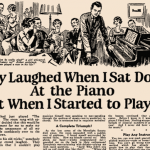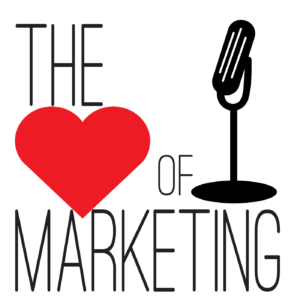 Stuck for ideas on writing an intro that hooks readers into your blog post? Here are six time-tested tactics you can steal
Stuck for ideas on writing an intro that hooks readers into your blog post? Here are six time-tested tactics you can steal
Bloggers: you have eight seconds to grab your reader’s attention.
It hardly seems fair, but that is the reality of life in the digital world. The average attention span of a Web user is eight seconds. That makes your opening paragraph crucial to the success of your blog post.
That’s not to diminish the importance of a great headline. It gets them to click in. But a weak opening puts you one click away from your precious reader bouncing into oblivion. And the clock starts the instant your page opens.
How do you hold the reader?
You can find helpful answers to that question by paging through a Reader’s Digest. It may not be at the top of your reading list as a blogging resource, but there is good reason to check it out.
Reader’s Digest has enjoyed wide popularity for more than eight decades. It is translated into 21 languages in 70 countries with 100 million readers. It must be doing something right.
And it is. The editors understand readership. How they structure an article offers valuable clues to how you can attract and hold readers on your blog.
This isn’t my revelation. I got the idea from reading Tested Advertising Methods by legendary adman John Caples. In it he analyzed Reader’s Digest to find its secrets for hooking readers in the lead paragraph. His findings are a treasure trove for bloggers.
6 blogging openers that grab your reader
Caples identified six formulas Reader’s Digest used to open its most-successful articles. They will work for grabbing your blog readers too. Here they are with an example for each one.
1. THE INTERRUPTING IDEA
Many articles begin with an interrupting idea. That is a startling statement or novel twist that breaks the natural thought pattern of the reader. Like this:
13 surprising marriage laws you might be breaking right now
Who knew: there are towns where marriage laws hold that you can’t sleep naked next to your spouse, where mistreating your mother-in-law means grounds for divorce, and where a wife must ask permission from her husband before wearing false teeth.
2. THE SHOCKER
The shocker is a close relative to the interrupting idea. The difference is instead of a novel twist, it has greater shock value. Prepare to be shocked:
Guess which of these gross habits are really healthy
Belching, passing gas, picking your nose and eating what comes out of it, and other seemingly disgusting actions might actually be healthy habits worth doing.
3. THE NEWS
Another popular opening used by the editors is to lead with a news reference. Here is an example:
Don’t cut the cord: why having a home phone line still matters
Last fall, in the days following Hurricane Sandy, hundreds of New Yorkers lined up not for tickets to a hot Broadway show but for their turn to use a pay phone. The storm had knocked out 25 percent of the cell phone towers from New Hampshire to North Carolina, leaving millions of people without cell service and forcing them into the streets to search for the no-longer-ubiquitous telephone booth.
4. THE PREVIEW
In some cases, the opening paragraph provides a synopsis or preview of the topic. This can also be used as a sub headline or caption for the main image. For example:
Breaking up? Best apps to get you through the 5 stages of grief
Looking to erase an ex from your mind and reach the Eternal Sunshine of the Spotless Mind? Today’s technology can help, with a clutch of apps and sites that make heartbreak hurt a little less.
5. THE QUOTATION
Opening with a quotation is another effective way Reader’s Digest used to pull the reader in. In this example, the editor paraphrases a well-known quote to set up the main idea of the story:
How volunteer experience can help job seekers
Job seekers should consider a new mantra: “Give back, and you shall receive.” Including volunteer experience on your resume could help you land a job, according to a new survey.
6. THE STORY
Caples found that more than half of the articles in Reader’s Digest opened with a story. Storytelling may be the single most compelling way to engage your reader. Doesn’t this example make you want to read on?
War stories: my dad’s private struggle after combat
One summer weekend when I was a boy, my father took my brother and me camping. I vividly remember the odor of cooking bass mixed with wood smoke, the splash of the Milky Way in the heavens, and the burning ember of Dad’s unfiltered Lucky Strike against the night. Even then, I knew how hard Dad was trying at this enormous thing, to be a father.
Keys to writing a compelling blog intro
In the interest of brevity, I gave you one example of each. But there is much you can take away from these examples. All of them have these things in common:
- They are packed with facts
- They telegraph the main idea of the article
- They are specific
- They have few adjectives
- They arouse curiosity
A compelling introduction makes the difference whether your blog post gets read or passed over. These time-tested tactics from Reader’s Digest will get you off to a good start. The beauty of these copywriting hacks is that Caples has done the research for us. They are based on the most successful and widely read articles he analyzed. And the principles are timeless.











Speak Your Mind